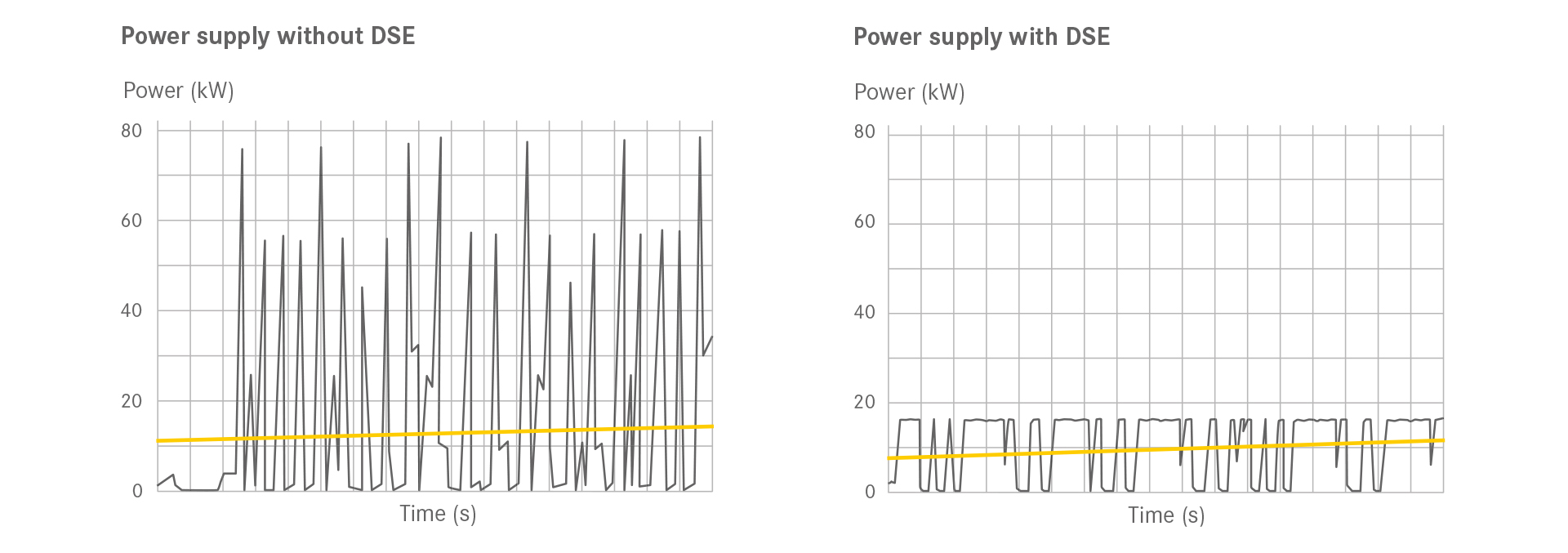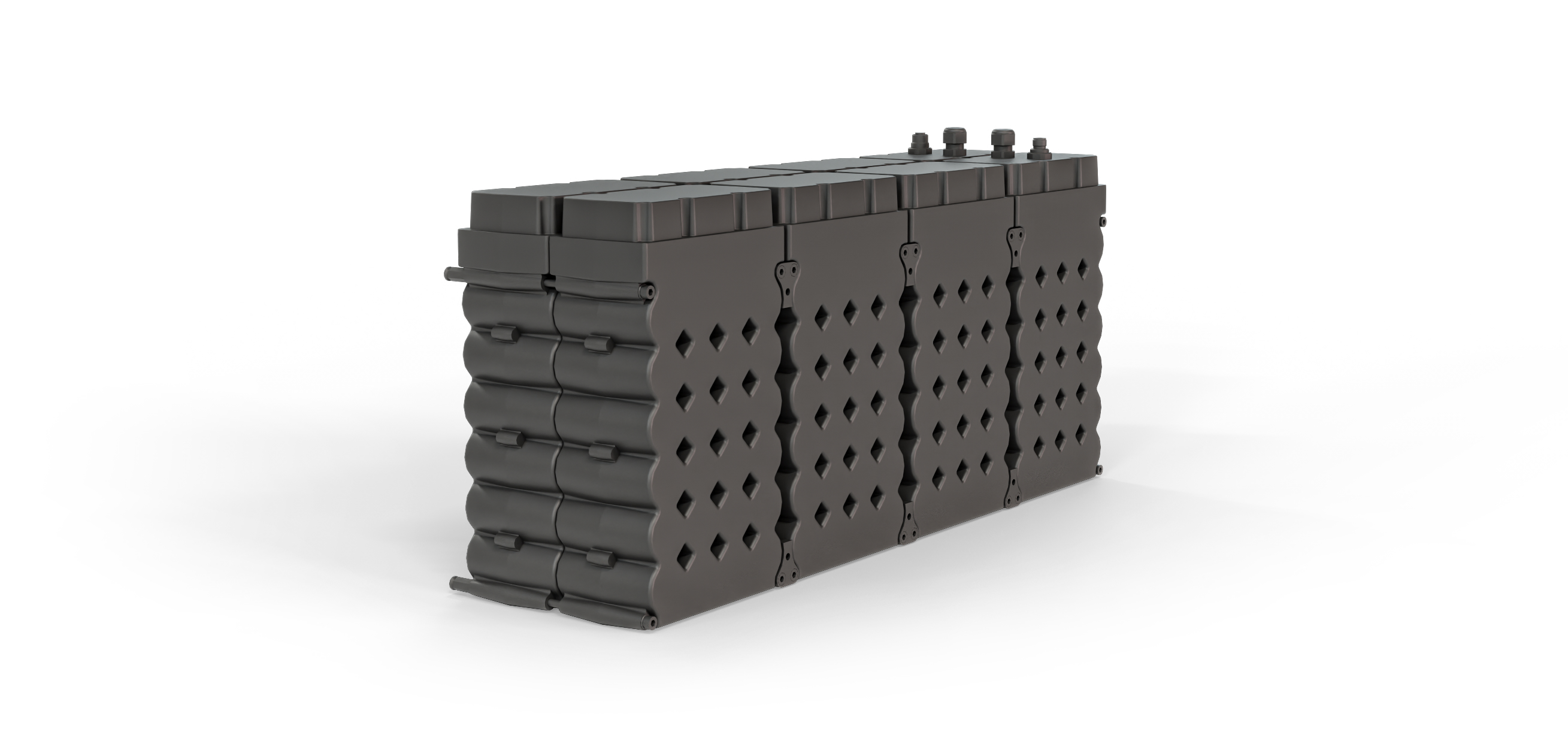Green Logistics
Not Just A Trend, Instead A Competitive Factor
Reducing energy consumption is the challenge facing technology and corporate structures. For in the end, cutting energy consumption is not only an issue for operating costs, but also for the environment. Reducing the throughput of a facility is not the right answer here. Implementing DSE in DAMBACH SRMs and vertical conveyors shows that environmental thinking and economic factors are not mutually exclusive. On the contrary, they complement each other. Because DSE not only reduces energy consumption, it also upholds current throughput, indeed can even increase it.
Energy Infrastructure
DSE is the Reliable Answer
Even if there is a poor energy infrastructure at the location or the grid is only designed for low power peaks and is prone to failure, efficient warehouses need good power supplies with good availability. Brief grid failures should not lead to malfunctions, and voltage peaks must be smoothed out. And if the power supply fails completely, then all equipment must come to a controlled stop.
Through smart recharging of the power caps, partly from the grid, partly from energy recovery, the peak current taken from the grid is reduced by a factor of five – and without this having a negative effect on warehouse throughput.
The recovered energy is not fed back into the grid, instead is reused locally. There is no need for complex grid synchronization and the associated hardware. That improves efficiency and in turn improves the energy balance. Energy consumption is cut by a third.
Peak currents for energy supplies from the grid are compensated for. The hardware required for the grid connection can be made smaller. Energy consumption is reduced.

Enery Management
DSE Cushions Power Peaks Efficiently
The energy stored temporarily in the DSE system is made available for brief power peaks, e.g. for raising loads and accelerating. DSE regulates the recharging of the power caps – either from energy recovery or from the grid during times of low activity – as well as the buffering of the energy. The power supply installations otherwise necessary to cover peak loads are therefore unnecessary. Installations already in place can be used to power additional equipment or improve performance. If DSE is considered right from the start when planning a new system, the effect of the smaller power supply is especially efficient.




